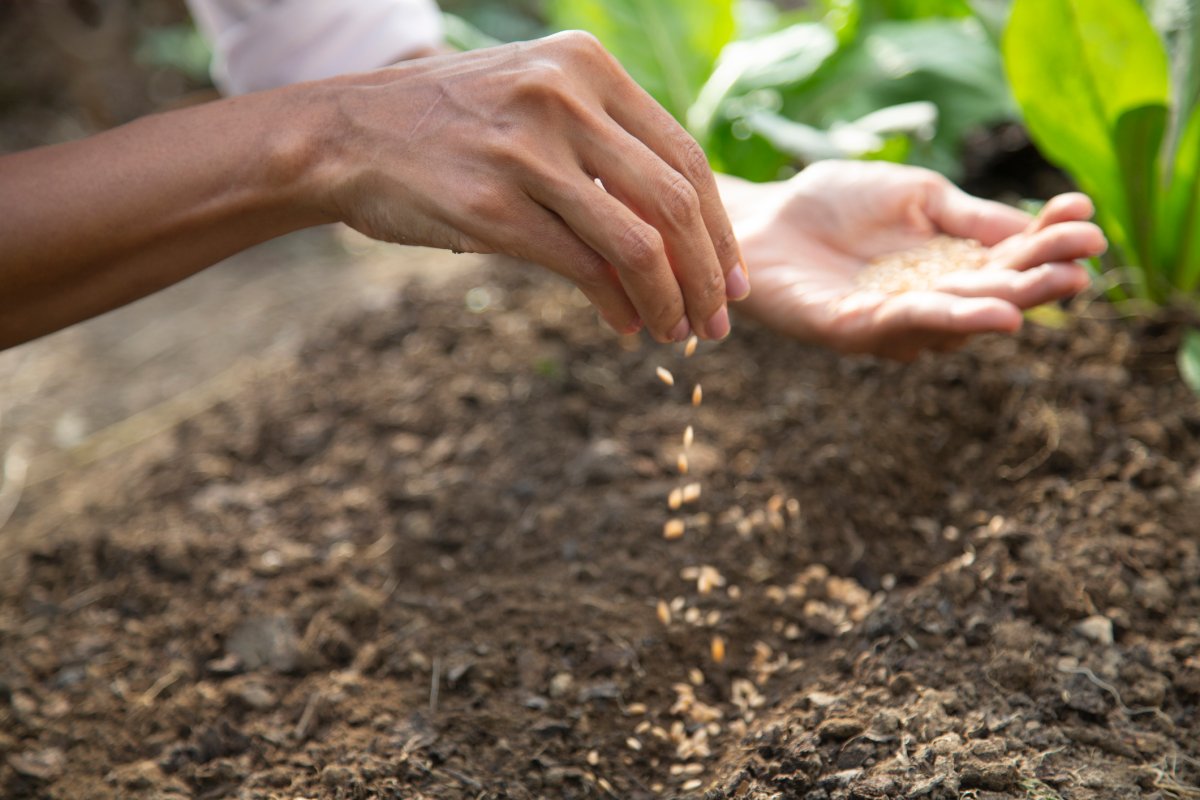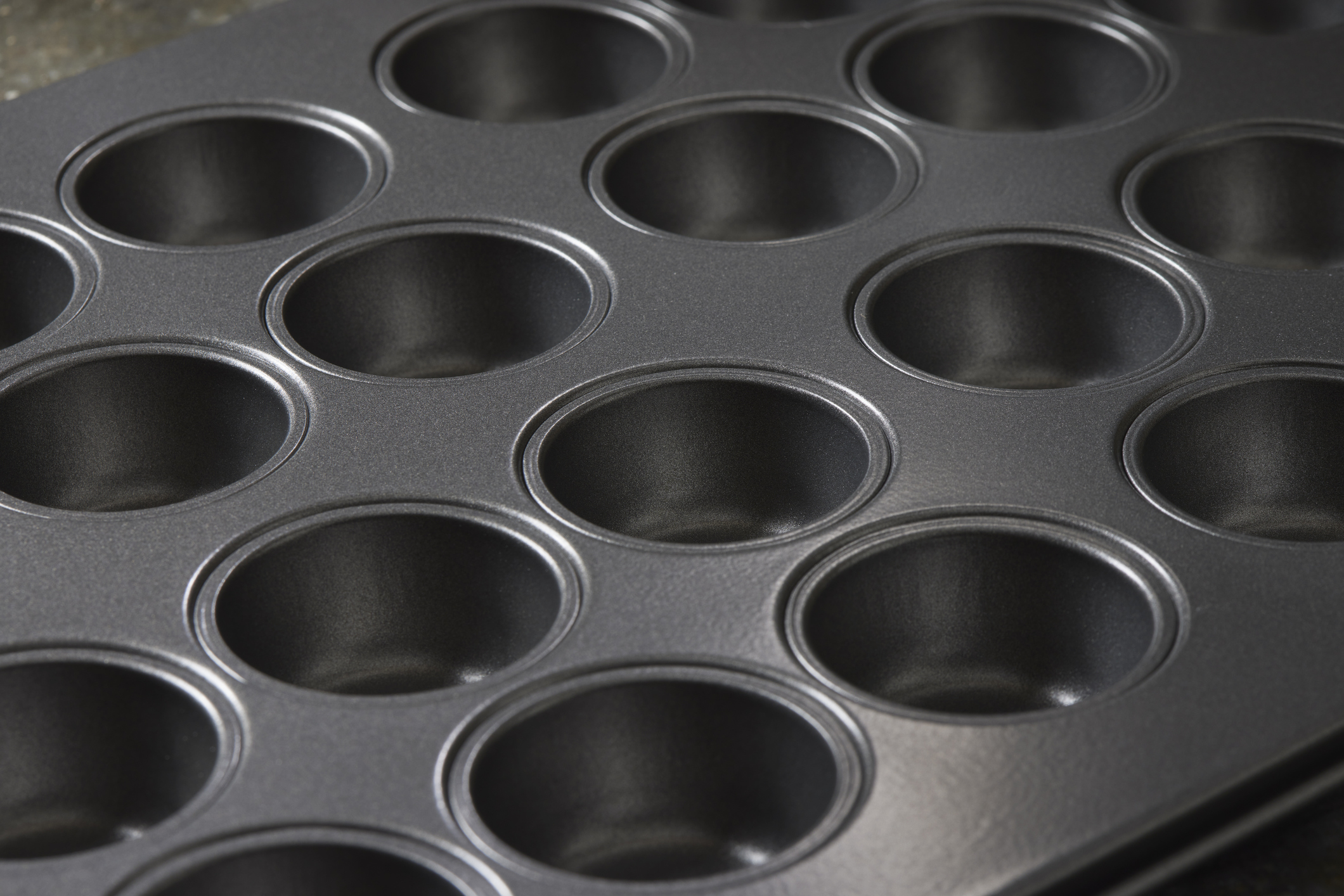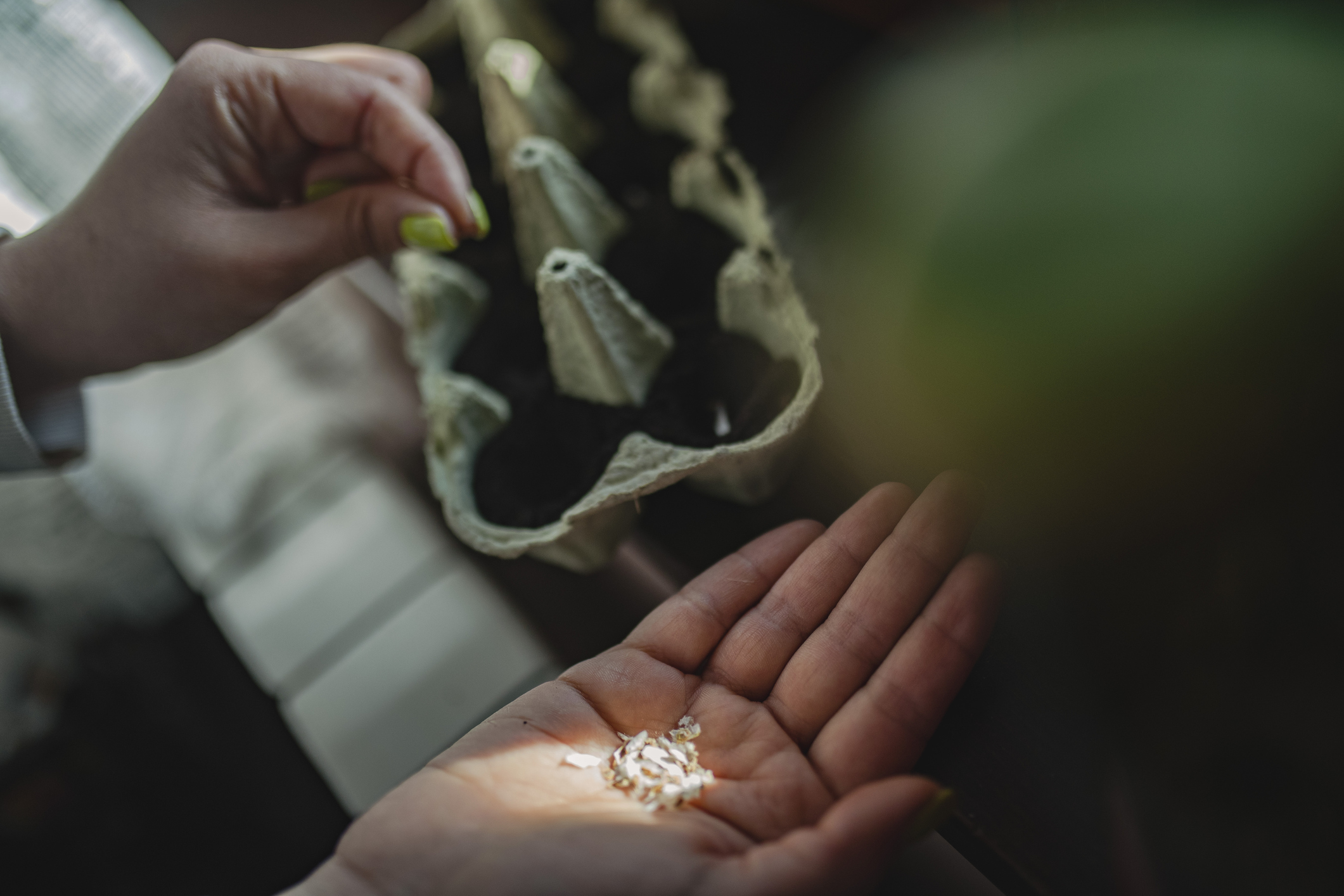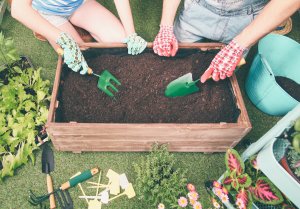

We may earn revenue from the products available on this page and participate in affiliate programs. Learn More ›
Seeds are the heart of any thriving garden. Whether you purchase your seeds from a reputable company, save seeds from your own garden, or collect free seeds from giveaways and your local library, you probably realize how much effort goes into planting seeds so they will sprout into beautiful plants and flowers you can enjoy.
In addition to using seed-starting containers repurposed from a variety of items like clamshell produce boxes, you’ll need a tool to space out the seedlings or new seeds when placing them in the ground. Correct seed spacing is critical for plant health, as plants need adequate room to grow. Following seed company instructions for minimum spacing also helps the plant receive the right amount of water, sunlight, and nutrients, while reducing competition with nearby plants and preventing diseases and pests. Plus, properly spaced vegetation can create a more aesthetically pleasing garden.
While some gardeners purchase a seeding square to properly space different varieties of plants, there are cheaper ways to tackle this task. Here are five household items that double as seed-spacing tools to help make gardening easier, more organized, and cost-effective.
1. Muffin Tin
A standard-size muffin tin is a particularly helpful tool for spacing seeds you’ve saved or purchased since the cups are normally spaced about 2 to 2.5 inches apart, says Gloria Sims, florist and owner at Florist Empire in Austin, Texas. This method is especially useful for small-seeded crops and flowers that require close spacing. Flip the muffin tin upside down and press it into the soil to create a grid of evenly spaced indentations into which you can simply drop seeds. This helps ensure that the seeds and their sprouts don’t compete with each other for nutrients and space in a garden bed or container, says Sims.
Spacing: 2 to 3 inches apart
Best for: Carrots, radishes, lettuce, zinnias, marigolds, alyssum

2. Yardstick or Ruler
Another excellent seed-spacing tool likely in your house is a yardstick or ruler; use them to measure out exact spacing for planting vegetables and flowers from seed. “Lay the ruler or yardstick flat on the soil and press gently to create a straight row,” says Jason Keeley, gardener and founder of Mowing Magic in North Garden, Virginia. “Use the inch markings as a guide to drop seeds at the correct spacing. This method helps maintain uniform planting rows.”
Sims also uses this method to plant flowers like zinnias, cosmos, and marigolds that require seed spacing from 6 to12 inches, depending on the variety. “When planting zinnias, I set down my ruler on the soil and create a small indentation using my finger or a dibber at 9-inch intervals for medium varieties and 12-inch intervals for larger varieties,” she explains. “This process promotes even growth and allows ample air circulation, which is most helpful in preventing fungal attacks,” says Sims.
Spacing: 6 to12 inches apart
Best for: Lettuce, beets, onions, cabbage, tomatoes, bush beans, zinnias, calendula, cosmos, marigolds
3. Coffee Can
For sowing seeds of larger plants, such as sunflowers, pumpkins, and squash, Sims recommends a typical coffee can. If you obtained free seeds and have no instructions for the specific variety, look up minimum spacing for plants of the same species.
“I employ the bottom of a coffee can for my spacing measurement,” she says. Sunflowers demand at least 6 to 12 inches of space, while pumpkins and squashes need a spacing of 24 to 36 inches between plants due to their long-vining growth. By pushing the coffee can’s bottom into the soil, “I create a visible planting guide that helps me to picture just how much room is appropriate for an individual plant,”says Sims.
Spacing: 6 to 36 inches apart
Best for: Squash, pumpkins, sunflowers

4. Egg Carton
According to Keeley, egg cartons serve a dual purpose—spacing seeds evenly and acting as biodegradable seed-starting trays. “Fill the cups with soil, plant seeds, and transplant directly into the ground when ready by cutting out each section,” he advises.
Sims agrees that having compartments arranged approximately 1.5 inches apart is particularly important for small seedlings, including petunias, basil, thyme, and lavender. “I fill each section with seed-starting mix, plant one seed in each, and keep them damp under grow lights,” she says. “When they are ready to transplant, I cut the sections apart and plant them directly into the soil, since the cardboard is biodegradable and will reduce transplant shock.”
Spacing: 1.5 to 2 inches apart
Best for: Parsley, basil, thyme, microgreens, lavender, snapdragons, lobelia, petunias
5. Ice Cube Tray
An old ice cube tray or one from a discount dollar store can also come in handy in your garden. “Lightly press the tray into your soil or seed-starting mix; it leaves a neat little grid so you know exactly where to sprinkle in the seeds,” says Donna Carlstrom, plant expert and owner of Rooted Rarities, a nursery and plant shop based in Hopedale, Massachusetts. She says it is most beneficial for planting seeds to grow microgreens, basil, cilantro, or any herbs you’re planting close together.
Spacing: 1 to 1.5 inches apart
Best for: Most herbs like basil and cilantro, microgreens, small flowers
